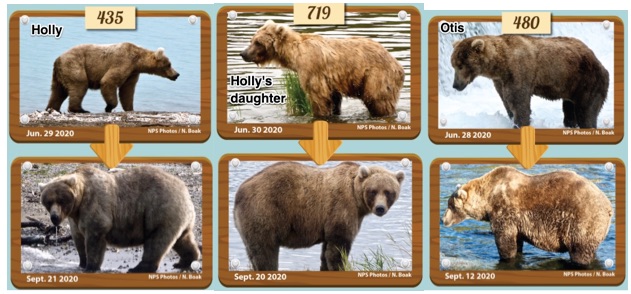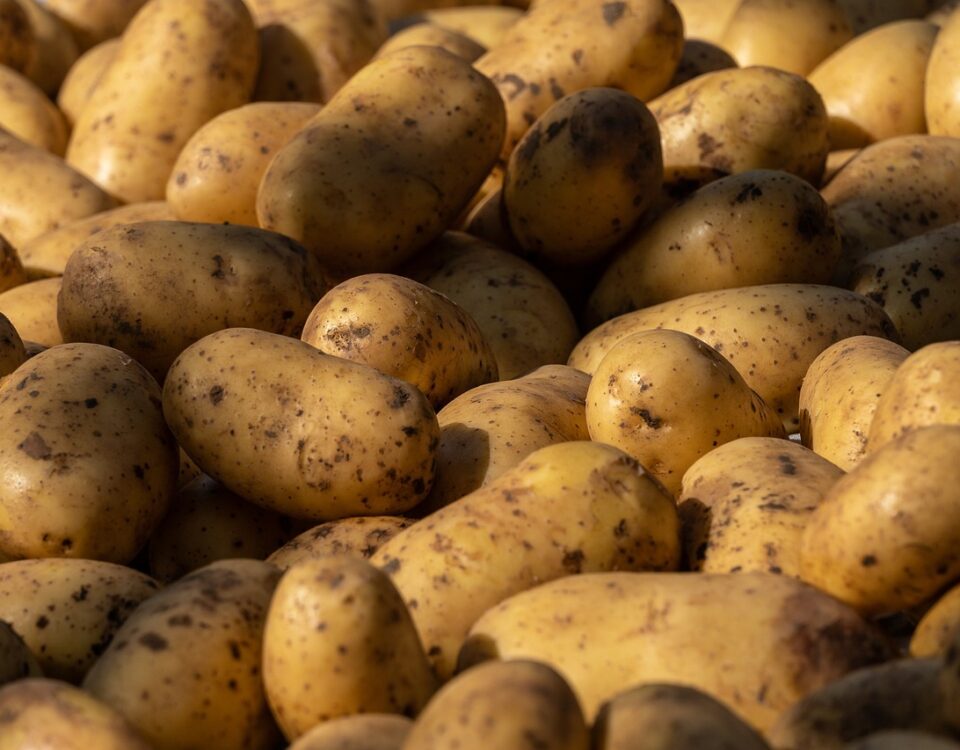
How to Keep a New Year’s Resolution
January 3, 2022
How Geography (and our crops) Divide Us
January 5, 2022We can always look forward to Fat Bear Week in Alaska’s Katmai National Park. Starting near the end of September, during those seven or so days, you and I can vote for our favorite fat bear. At that time, just before temperatures drop below freezing and a 6-month hibernation is imminent, brown bears eat as much as 120 pounds of salmon a day.
Here are some contestants’ before and after pictures:

Otis won this year:

By suspending the oil and gas leases that had the Trump Administration’s go ahead in Alaska’s Arctic National Wildlife Refuge, President Biden helped to save the sockeye salmon habitat where the brown bears feast.
The Biden Administration is also saving some 500-year-old trees.
Development or Conservation
The rescue though is controversial.
On the one hand, in Alaska’s Tongass National Forest, Sitka spruce trees can be as tall as a 17-story building. Soaring more than 180 feet with a 15.7 foot circumference, they add majesty to the woods and rescue CO2 from the environment. As a reservoir for greenhouse gases, the Sitka spruce helps the forest store an estimated 9.9. billion tons of CO2. It also enables far-off firms to purchase carbon offsets.
However, logging has added countless high paying jobs to the Alaskan economy. The trees’ old growth wood can be used to make a magnificent musical instrument or become 6,000 board feet of beautifully grained lumber. Sold, the tree can go for $17,500 in the open market.
Below, you can see the magnified detail at the eastern edge of Alaska where the Sitka spruce are located:

Similarly, oil, gas, and mining development would have generated jobs and revenue.
As economists, whether looking at fat bears or old trees, we have to consider the development or conservation tradeoffs.
Our Bottom Line: The Tradeoffs
Cutting down an old growth Sitka spruce, we could get beautiful music or a lovely home. Defined as sacrifice by economists, the cost is the carbon, the beauty, and an ecotourism industry. The Clinton, Obama, and Biden Administrations have debated the no road rule to constrain forest access. Still, loggers tell us “You cut the best, so the best is aways left.”
Below you can see a bit of the bears’ environment:
So yes, whether contemplating fat bears or big trees, we are facing the minerals wilderness tradeoff that makes us choose between development or conservation. An economist would say that because of scarcity, we have to make tradeoffs. Since there is a limited quantity of most goods and services, “choosing is refusing.” Shown on a production possibilities graph, more of one item means less of another one. Below you can see that as you move along the curve, you sacrifice more minerals for more wilderness:
So, thinking development or conservation, do picture the the jobs and the revenue and bears and the trees.
My sources and more: The explore website has all of the facts, links, and details on the fat bears. Meanwhile, there is more about the Biden decision at CNBC and here and here. And this Washington Post article focused on the trees.
Our featured image is a Sitka spruce that had a the blue cutdown circle. But now it will survive. Please note that some of today’s post was previously published.
![econlifelogotrademarkedwebsitelogo[1]](/wp-content/uploads/2024/05/econlifelogotrademarkedwebsitelogo1.png#100878)





